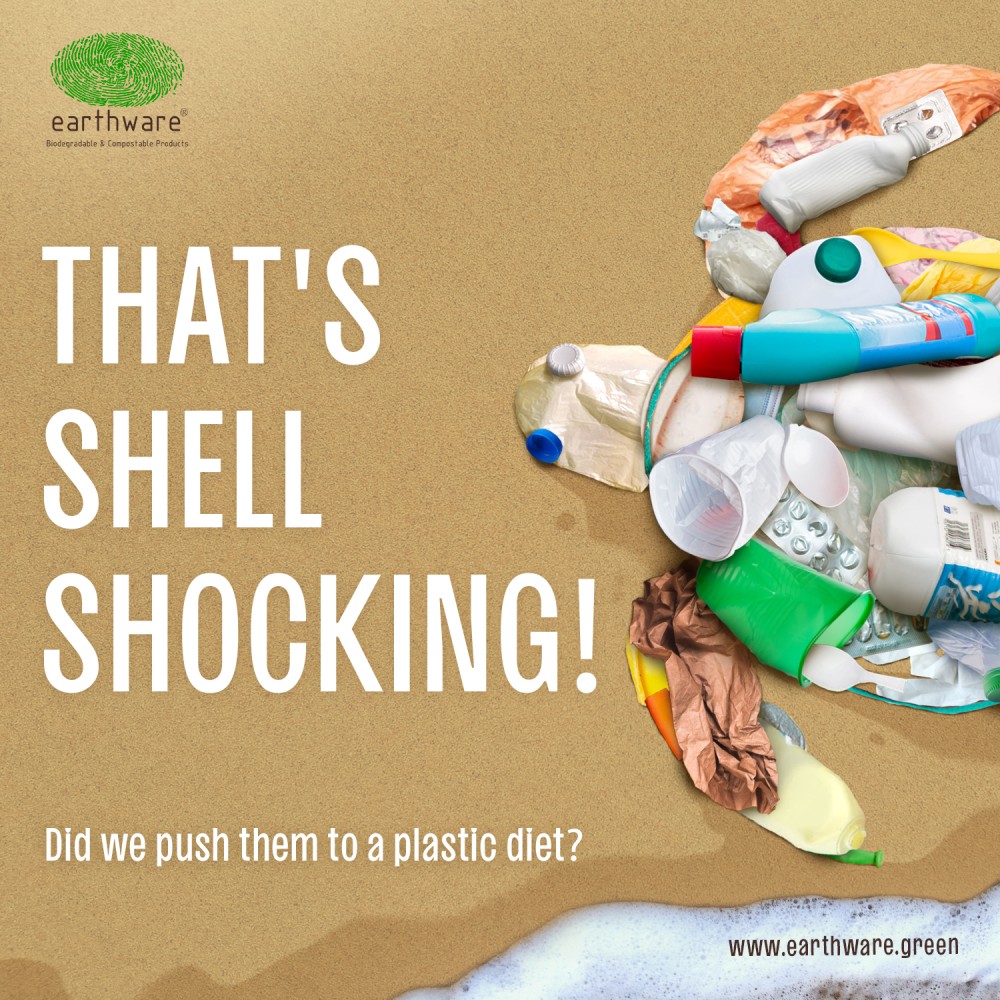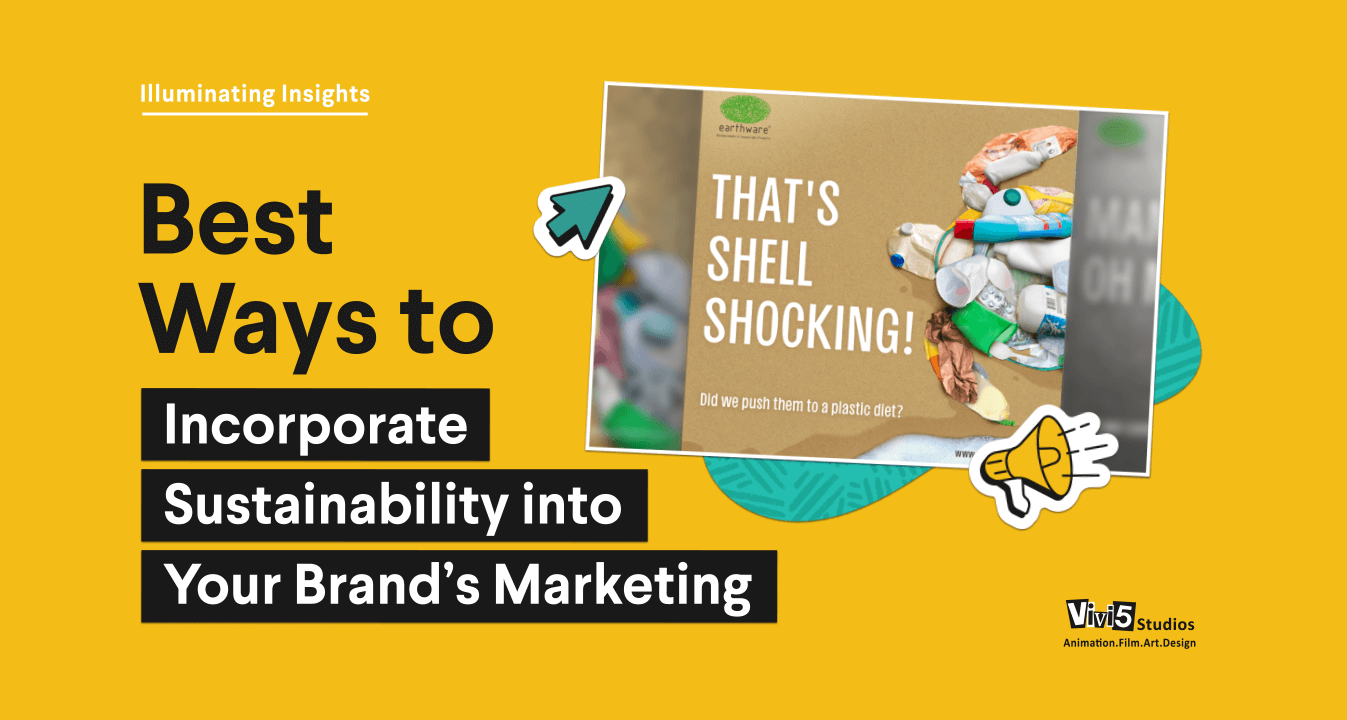The emergence of sustainable marketing, speaks volumes about how audiences are moving towards brands that want to create a change.
Every day, articles on climate change fill our social media feeds. Our planet has started to see visible effects of global warming through colder winters and hotter summers each year. From raging wildfires in Australia in 2020, destructive floods in Assam in 2022 to the devastating earthquakes of Turkey in 2023, we are on the brink of an unprecedented climate hazard. As the climate becomes an increasing concern, the need for consumer environmental awareness has never been higher. Thus, as leaders of the market, brands certainly need to change their ideologies and positioning to not only fit the current trends but be sustainable in their approach to survive the competition. 20
The emergence of sustainable brands in the market is not new, but their growth and increased visibility in recent years indicate that consumers want change. Consumers’ support of such brands shows their care and awareness about the planet. In the path to sustainable or “climate-conscious” marketing, this is because 90% of today’s youth gravitate towards environmentally friendly businesses.
CSR or Corporate Social Responsibility, as the name suggests, is the self-regulation of businesses to incorporate social and environmental concerns in their operations and interactions with their stakeholders. As CSR becomes an increasingly common brand value to be practised, the most recent Conference of Parties (COP) has highlighted its objectives for 2023, namely:
- Reducing emissions
- Helping countries adapt
- Climate finance
The responsibility for the climate crisis is a shared cause, by world leaders, businesses, as well as individuals. Thus, sharing your company’s eco-credentials can help your brand win increased customer loyalty, as well as more business accounts. This further paves the way for marketers to practice sustainability.
Here are 3 ads that we feel highlight sustainable marketing in the most desirable way.
What if we lived in a utopia?
IKEA, the renowned Scandinavian brand for furniture and homewares, has been a leader, in promoting sustainable development. The brand’s Malaysian campaign, “What if?” recites a poem of an ideal world. The visual components and the script have a narrative style and everyday shots that increase their relativity to the audience and make them question “What if the world was such”.

The recitation showcases the importance of a strong script whereas the closer shots of furniture blend with the foreground and the background highlighting the malleability of IKEA as a brand to fit into our daily lives. The ad film uses various indicative shots with the usage of DIY furniture without screws that save labour costs and the reusing of glass to make glassware insinuating the brand’s recycling ideologies. Moreover, multiple frames in the film highlight greenery, nature, and forests to propagate IKEA’s green-marketing approach.
Beyond its ideologies of no packaging and water-saving taps, the brand promotes the idea of inclusivity by merging racial differences, by stating, “What if we celebrated our differences? Because without each and every one of us, we wouldn’t be complete.” The latter is a reminder to its consumers that sustainability can only be achieved if we put our differences aside. The ad film ends with the text, “Most things still remain to be done” while a calming voice reassures, “What if?” referring to the beautiful ideal world where we can live happily ever after. It only suggests that the world and IKEA are a work in progress. With each flick in the frame, the brand urges its consumers to be more environmentally aware and take a step.
Fishing through plastic
It’s underrated, but static ads use the minimum visuals to create the maximum delivery. Earthware is an Indian brand, and as the name suggests the brand creates biodegradable cutlery and eco-friendly packaging from sustainable resources for the food industry. We built on a realistic-looking 3D-esque treatment with the word-play with the copy, creating a campaign that was a quick and relatable message to their audience.


Our campaign was built on shock-inducing statements like “oh fish, holy cow, shell-shocking.” This readily catches the attention while adding a fun element that sounds akin to “oh f***” and so on. The fish creative is a great example where the visual elements that accompany the ads are that of a fish created with plastic throwaways. The lifeless look of the fish suggests the death of marine animals due to plastic build-up in oceans, whereas the bold colours of the plastic items highlighted point to Earthware’s ideology against the usage of plastic. As a consumer further observes, they get the idea of what the brand is trying to say through, “Did we push them to a plastic diet” that amplifies the message and pushes one to retrospect. The creators note that the concept was to push the message first while the brand itself remained secondary. Earthware’s minimal play with its ads creates a simple dichotomy, narrating the brand’s ideology and further pushing the brand’s value. Perhaps, it is a classic case of “UNO reverse”?
Green is the colour of home
Advertisements have been using metaphors to tell their story for years now, yet each message comes out only stronger than before. Ørsted is a multinational energy-based company in Denmark. Through their campaign, “Love your home”, they promote their transition from using black energy to green energy through windmills. The ad film follows a poetic narration to a metaphorical story, edging the understanding of the planet, Earth, as our home and its treatment of its residents without any discrimination.

The first few visual components compare the planet to a home with neighbours, fellow residents, comfort, and sharing our space. The bold shots of people, animals, and natural beauty are symbolic of the fact that our home has endless beauty that we often take for granted yet each time we see it, we are filled with a sense of belonging.
Somewhere in the middle of the film, they give a quick introduction to a random young girl and fellow resident, Latifa, to increase the brand’s instructiveness. The climbing pace of the film, from calm and comforting to that of urgency to take action via quick shots of calamities that threaten the planet. The narration and the music become subtle, the poem calls for the transformation of the planet, consumers as well as the brand from black energy to green energy. It is almost as if Ørsted urges the consumers to pay attention to what they are consuming and increase environmental awareness through the brand itself. Metaphorical reflections of the windmill over the deep blue ocean and the rhythm of the wind insinuates the company’s accomplishments in the field of wind energy, The concluding frame ends with a simple text, “Love your home” that calls for consumers to believe in the brand and take part in loving as well as saving the planet.
However, in a world where brands are making a statement and understanding their responsibility towards a greener and cleaner market, there remain companies who only put up a facade through ‘Greenwashing’. Greenwashing or the “green sheen’” is a marketing or PR stunt that is used by companies to exaggerate their brand’s eco-credentials and appear to be better for the environment than they are in reality. This cynical marketing deploy has been used by many companies to increase their profit margins knowing full well that conscious consumers would pay higher to buy sustainable products. It is important for brands to understand that consumers are smart, especially when they are caring and conscious. While certainly, for the time being, PR stunts may work in favour of profit margins, in the long run, they will find out. The environment is dying faster than ever, there is no time later. It is an urgent call to switch to sustainable marketing for a sustainable future and to change the world of business. The time is now, now is the time to take action.
Written by Adyasha Mishra





